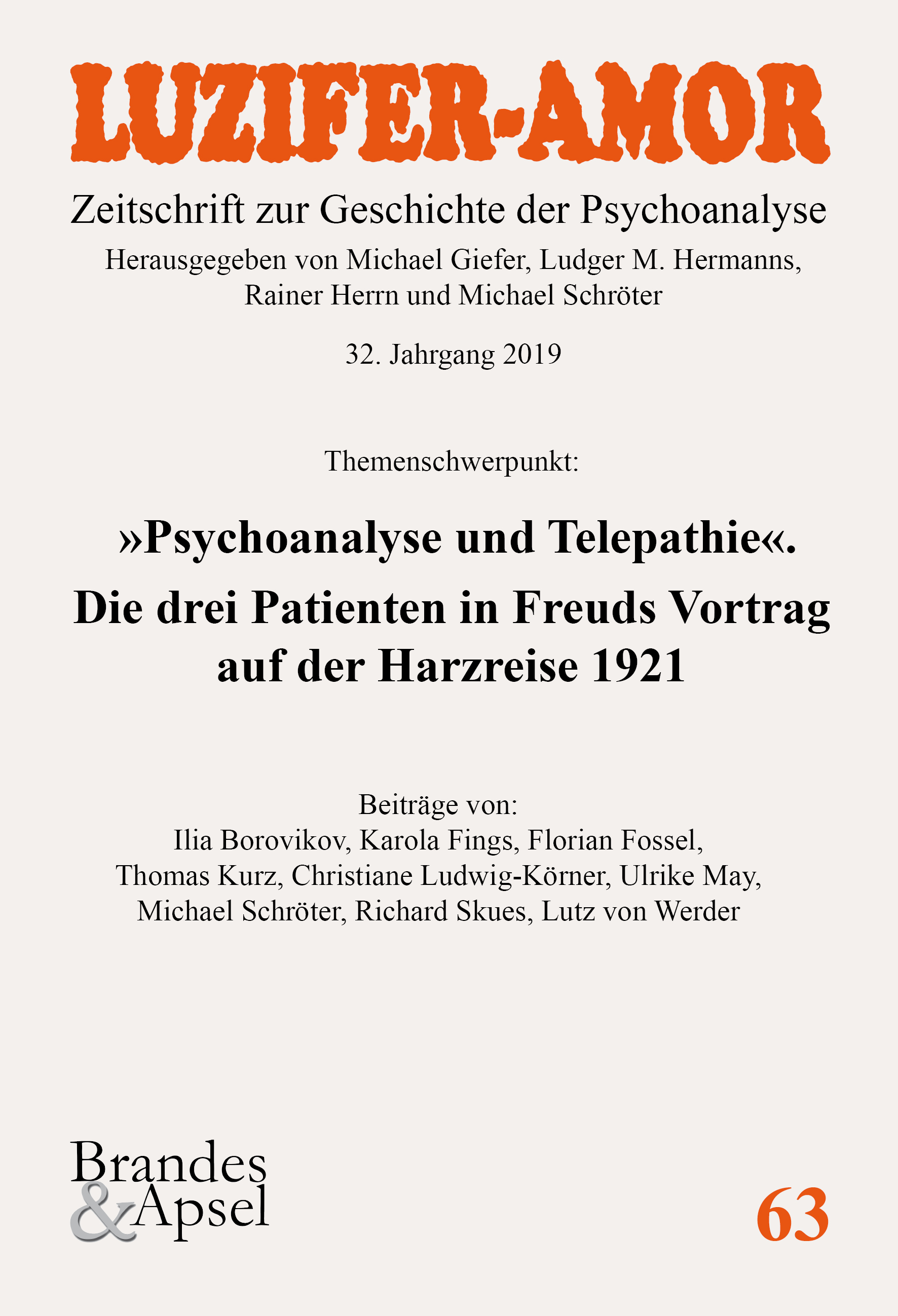Heft 63 (32. Jg. 2019): »Psychoanalyse und Telepathie«. Die drei Patienten in Freuds Vortrag auf der Harzreise 1921

Thomas Kurz
Der Basler Psychoanalytiker Philipp Sarasin (S. 101-131)
Zusammenfassung: Die Veröffentlichung des Interviews, das Kurt R. Eissler 1954 mit Philipp Sarasin geführt hatte, ist Anlass dieses Porträts des Basler Psychoanalytikers und Freud-Analysanden, der von 1928 bis 1961 Präsident der Schweizerischen Gesellschaft für Psychoanalyse und von 1936 bis 1952 Kassenwart der IPV war. Sarasins Analyse fand, ohne Unterbrechungen (außer den Ferien), von April 1921 bis April 1923 in sechs Wochenstunden statt und umfasste rund 475 Stunden; sie war damit wohl die Lehranalyse Freuds mit der größten Stundenzahl. Es wird nachgezeichnet, wie Sarasin zur Psychoanalyse kam, und wie er das in Wien Erfahrene – mit Modifikationen – in seiner Praxis in Basel umsetzte. Die Selbstdarstellung Sarasins im Eissler-Interview – ein von Freuds Autorität eingeschüchterter Analytiker – kontrastiert erheblich mit der Schilderung des Schweizer Ausbildungsanalytikers Dieter Bürgin, der von 1964 bis 1968 bei Sarasin in Analyse war. Bürgin attestiert Sarasin eine große Standfestigkeit und einen klaren Kompass. Diese Sichtweise drängt sich auch auf, wenn man Sarasins Einsatz für die Laienanalyse und sein Verhalten auf dem Höhepunkt der Krise der Britischen Gesellschaft betrachtet, als er Anna Freud und Edward Glover gegen den Widerstand von Ernest Jones als Mitglieder in die Schweizer Gesellschaft übernahm.
Summary: The Basel psychoanalyst Philipp Sarasin The publication of Kurt R. Eissler’s interview with Freud analysand Philipp Sarasin, conducted in 1954, has triggered this portrait of the man who was president of the Swiss Society for Psychoanalysis from 1928 to 1961 and treasurer of the IPA from 1936 to 1952. From April 1921 to April 1923 Sarasin spent six hours a week on Freud’s couch, in total c. 475 hours; this was presumably Freud’s longest didactic analysis and took place without interruption, except for holidays. The paper describes how Sarasin came to psychoanalysis and how he implemented the experience he had gained in Vienna -- with modifications -- in his practice in Basel. Sarasin’s self-portrait in the Eissler interview -- an analyst intimidated by Freud’s authority - contrasts markedly with the record of the Swiss training analyst Dieter Bürgin who was analyzed by Sarasin from 1964 to 1968. Bürgin attests his great steadfastness and sense of direction. This profile is confirmed by Sarasin’s commitment to lay analysis and his behavior at the height of the crisis in the British Society when he accepted Anna Freud and Edward Glover as members of the Swiss Society against the resistance of IPA president Ernest Jones.
